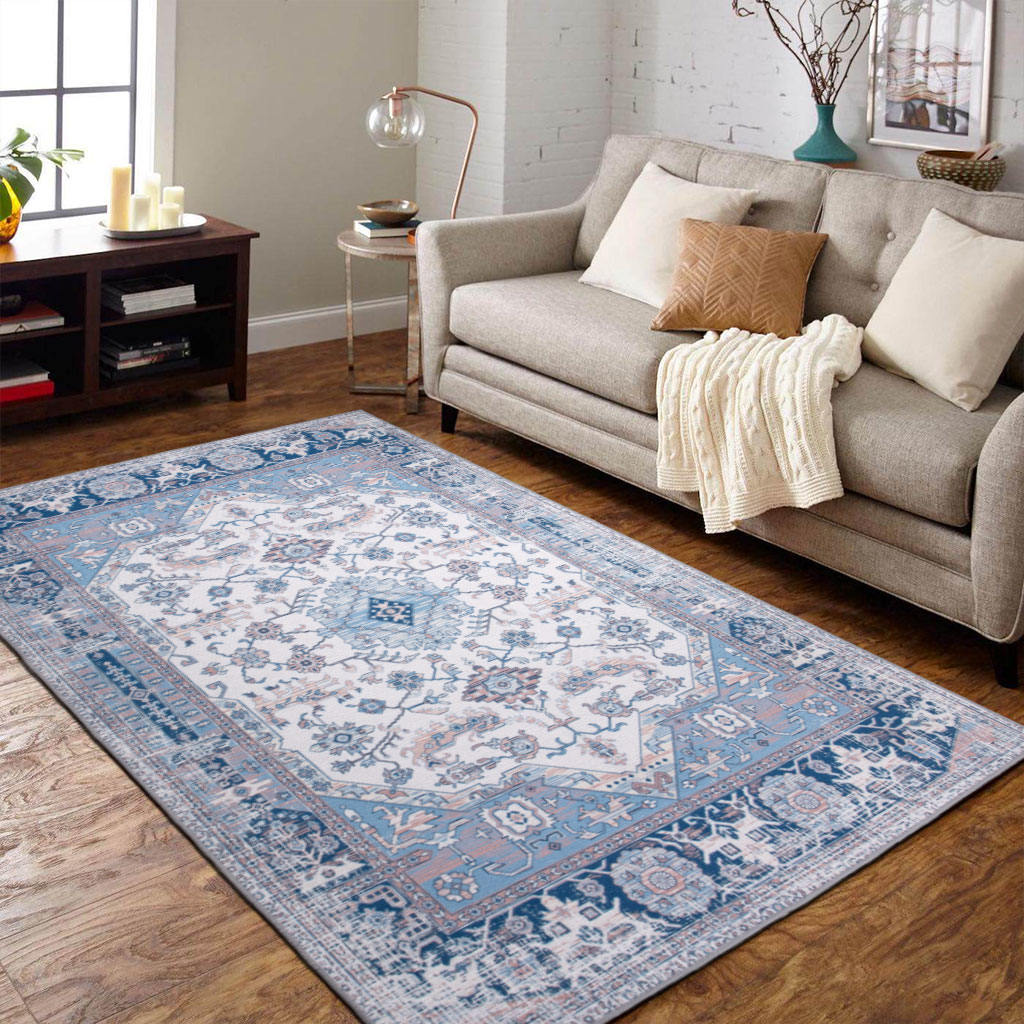 2025.09.02
2025.09.02
 Industry News
Industry News
Placing an area rug under a dining table can transform your dining space, adding warmth, color, and texture. But if done incorrectly, it can look awkward or even be a tripping hazard. To ensure your dining room looks cohesive and inviting, follow this comprehensive guide on how to choose and place the perfect rug.
This is the single most important rule to follow. A rug that is too small for your dining table will make the room feel cramped and unbalanced. When chairs are pushed back, they should still remain on the rug. If the back legs of the chair fall off the rug, it can create an unstable and uncomfortable seating experience.
The 24-Inch Rule: A good benchmark is to choose an area rug that extends at least 24 inches (60 cm) beyond the edges of the dining table on all sides. This measurement ensures that all four legs of your dining chairs stay on the rug, even when someone is seated and scooted back from the table.
Measure Your Space: Before you start shopping, measure your dining table and the chairs. Then, add at least 48 inches (24 inches per side) to the length and width of the table to find the ideal rug size. For example, a 60-inch round table would need a rug that is at least 108 inches (9 feet) in diameter.
The shape of your area rug should complement the shape of your dining table. This creates a visually harmonious look and defines the space effectively.
Round Table, Round Rug: A round rug is the natural choice for a round dining table. This pairing creates a sense of flow and softness in the room.
Rectangular Table, Rectangular Rug: This classic combination is the most common and works well in most dining rooms. A rectangular area rug grounds the table and chairs, making the setup feel complete.
The dining room is a high-traffic area prone to spills and messes. Choosing a durable, easy-to-clean rug material is a practical decision that will save you a lot of trouble.
Wool: A fantastic choice. Wool is naturally stain-resistant and incredibly durable. It can withstand heavy chair movement and is easy to clean.
Synthetics (Polypropylene/Polyester): These materials are often the most budget-friendly and are highly resistant to moisture and stains. They are also easy to clean, making them a great option for families with kids or pets.
Avoid Delicate Fibers: While silk or viscose rugs may look luxurious, they are not practical for a dining room. They are difficult to clean and can easily be damaged by spills.

The color and pattern of your rug can set the entire mood of your dining space.
For a bold statement, choose a rug with a vibrant color or a geometric pattern that complements your existing decor.
For a more subtle look, opt for a neutral rug with a simple texture or a muted pattern. This allows the furniture and other decor to stand out.
No matter your choice, ensure the colors work with the wall color, furniture, and any other textiles in the room.
Once you have your rug, here are a few final tips for optimal placement and maintenance:
Use a Rug Pad: Always place a non-slip rug pad underneath your area rug. A rug pad prevents the rug from shifting, protects your floors, and provides a cushion that makes walking on the rug more comfortable.
Check Clearance: Make sure the rug doesn't interfere with door swings or other furniture.
Regular Cleaning: To keep your area rug looking new, vacuum it regularly to remove crumbs and dirt. Address spills immediately to prevent stains from setting.
By following these guidelines, you can confidently select and place an area rug that not only looks stunning but also functions perfectly in your dining space.